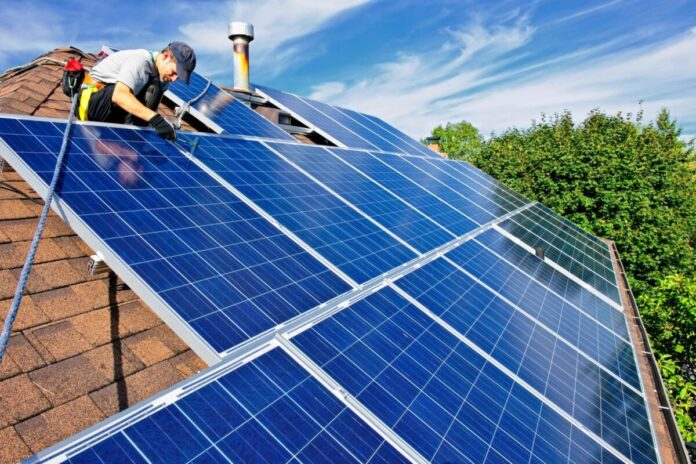The idea of an electric vehicle (EV) sounds like it would be great for preppers; no depending on pipelines and trucks to bring oil to your local gas station. Just use your solar panels to charge it up.
Except it’s not that easy. It takes up to 100 kilowatt hours (kWh) of electricity to charge a Tesla Model S. To put this in perspective, we use about 25 kWh of electricity in our house every day. Recharging the car would take about as much power as we use in four days, and that’s on top of our normal consumption. Nobody’s solar power system is sized to produce that much extra power. The idea of regularly charging your EV with your solar system is a pipe dream unless you invest $100,000 or more in your system.
(This explains why states like California are asking EV owners to recharge in the middle of the night. The high draw of the chargers threatens the stability of the grid when electrical use is near capacity.)
Generators
Let’s say that you have a generator that provides 5 kWh with a surge capacity of 6.5 kWh. If you ran it close to the top speed, it would take up to 20 hours to charge your vehicle. This assume you aren’t using the generator’s electricity to do your laundry, run your hot water heater, or anything else. It would consume the maximum amount of gas and you’d have to change the oil every second or third time you charge it. If you have that much gas for that, you might as well just burn it in a vehicle with an internal combustion engine.
The problems don’t end there. As electric vehicle extend their range, they will require more and more power to be stored in their battery pack. That will demand more and more electricity from your solar panels and take longer and longer to recharge.
Not Ready for Off-Grid Use
If you have an EV, you are tied to the grid unless solar power panels become far cheaper and far more productive. Newsflash: neither is on the horizon.
With a gasoline or diesel vehicle, you can always scavenge fuel, at least until a couple years pass and it goes bad. Maybe you’ll luck into a few gallons in a red plastic can in someone’s shed or find a car in a garage with a half full tank. You can’t scavenge for electricity. It’s either flowing or it’s not.
It’s also far easier to transport extra gasoline with you. I have four military-style metal gas cans that can add an 20 extra gallons or over 500 miles to any trip I take. You can’t carry extra batteries with you because they weigh too much.
It will also easier to find someone to repair your internal combustion engine or do it yourself in a post-collapse society. There are also far more spare parts available for traditional vehicles, even in these days of shortages and a tight supply chain. Good luck finding a mechanic to work on your EV after the crash. You can change a flat tire or replace a wiper blade, but anything beyond that is going to take a factory-trained technician.
The only advantage I can see of an EV is use in a mass evacuation. Assuming that you bugout with a full battery, you won’t get caught in any gas lines or shortages. It’s probably easier in that scenario to find a public EV charger. Of course, it can take about an hour to recharge, and you have to hope your destination has a charger and the grid is still up or you just made a one-way trip.
Alternatives
There are a few electric ATVs out there that could be great for preppers with a solar system. The two I found online (that don’t look like glorified golf carts) used 8 kWh and 12kWh batteries and charge using standard household current and plugs. A sunny day or two, and you would be fully charged. An added bonus is that it is quieter than a gas-powered ATV. That could make it useful in a survival situation and would allow you to expand your patrol. This is an area to monitor over the next few years, as there is room for growth in this category.
The range on these was between 35 and 75 miles, which does not sound like much. But in a post-TEOTWAWKI world without gasoline that relies on horses or an ox-cart, the ability to drive 20 miles and return on one charge will be impressive. The question is, what do you do when you run out of battery power 4 miles from home?
I guess we should include the golf cart on this list as well, even though they can cover closer to 20 miles on a charge. While not as useful as an ATV off-road or for farm use, I could foresee a time post SHTF where having a golf cart you can charge with your solar charger would be better than nothing. This is also mature technology.
There are also electric farm tractors available, including this one with a front-end loader and a PTO. That would be mighty useful to a homesteader, but they don’t have a long run time. This model has a 22 kWh battery that gives it a three to six hour run time.
Another new technology that might be useful would be electric dirt bikes and mountain bikes. The latter usually allows you to peddle and get an assist from the battery. Depending on the scenario, these could be of use delivering messages, coordinating with distant neighbors, to help a country doctor get around quickly, or even to respond to a problem in a distant part of your area of operation.
All You Need is Cash
If you have an extra $400,000 or $500,000 burning a hole in your pocket, you could set up a 30 kWh solar system, buy yourself an electric car or (one day soon) pickup truck, an electric tractor, two electric ATVs, and maybe an electric dirt bike for fun. Then you’d be set for a collapse of our oil-driven economy or the next hack attack on our pipelines.
If you already have a solar system capable of generation 5 to 10 kWh on a good day, then you can take advantage of one of our alternatives.
The rest of us will just have to wait and hope sola prices continue to drop. Maybe things will be different in five years, assuming the economy hasn’t tanked, inflation doesn’t screw us out of our money, and we don’t go to war with the Chinese.







